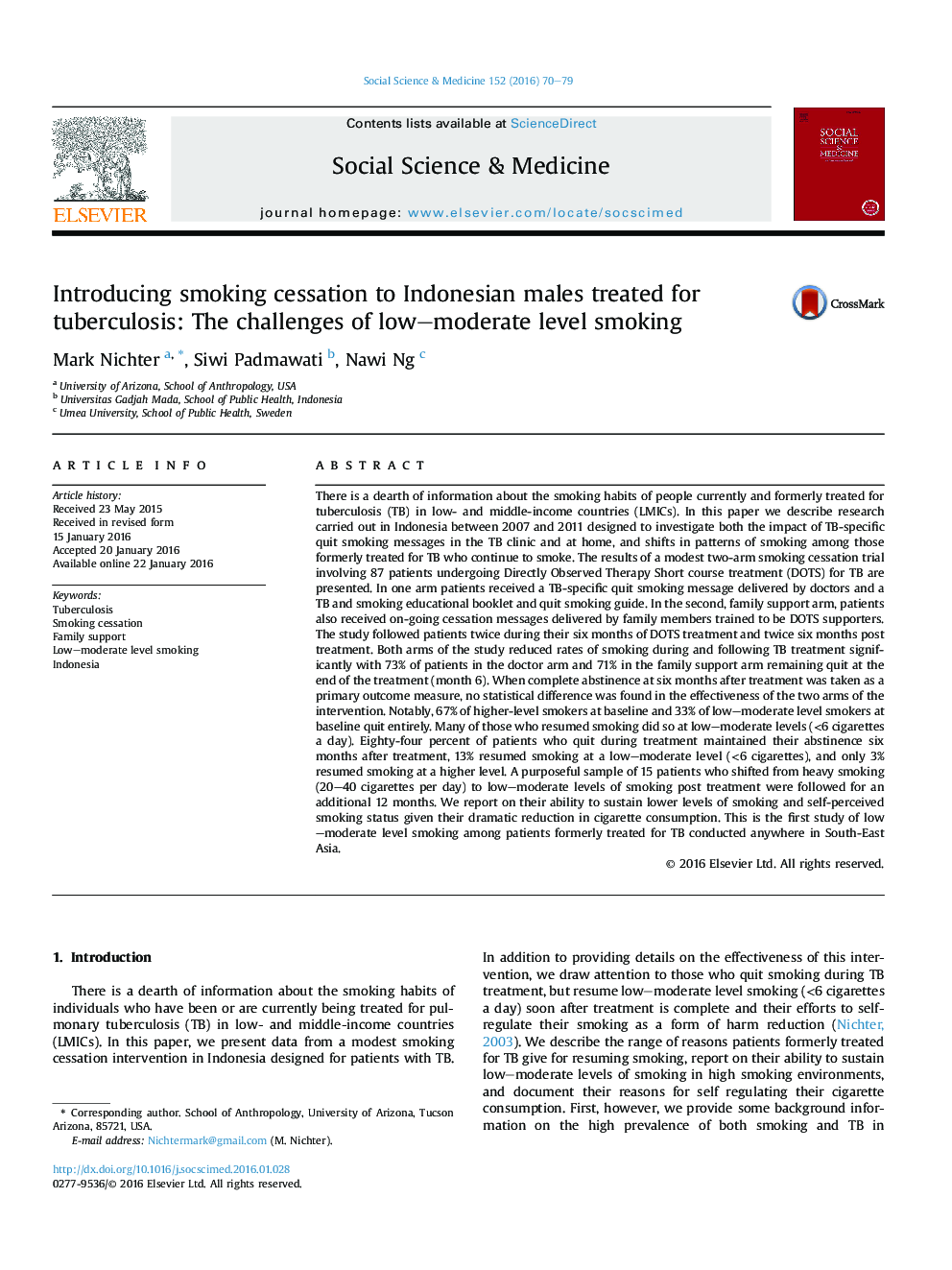| Article ID | Journal | Published Year | Pages | File Type |
|---|---|---|---|---|
| 7330553 | Social Science & Medicine | 2016 | 10 Pages |
Abstract
There is a dearth of information about the smoking habits of people currently and formerly treated for tuberculosis (TB) in low- and middle-income countries (LMICs). In this paper we describe research carried out in Indonesia between 2007 and 2011 designed to investigate both the impact of TB-specific quit smoking messages in the TB clinic and at home, and shifts in patterns of smoking among those formerly treated for TB who continue to smoke. The results of a modest two-arm smoking cessation trial involving 87 patients undergoing Directly Observed Therapy Short course treatment (DOTS) for TB are presented. In one arm patients received a TB-specific quit smoking message delivered by doctors and a TB and smoking educational booklet and quit smoking guide. In the second, family support arm, patients also received on-going cessation messages delivered by family members trained to be DOTS supporters. The study followed patients twice during their six months of DOTS treatment and twice six months post treatment. Both arms of the study reduced rates of smoking during and following TB treatment significantly with 73% of patients in the doctor arm and 71% in the family support arm remaining quit at the end of the treatment (month 6). When complete abstinence at six months after treatment was taken as a primary outcome measure, no statistical difference was found in the effectiveness of the two arms of the intervention. Notably, 67% of higher-level smokers at baseline and 33% of low-moderate level smokers at baseline quit entirely. Many of those who resumed smoking did so at low-moderate levels (<6 cigarettes a day). Eighty-four percent of patients who quit during treatment maintained their abstinence six months after treatment, 13% resumed smoking at a low-moderate level (<6 cigarettes), and only 3% resumed smoking at a higher level. A purposeful sample of 15 patients who shifted from heavy smoking (20-40 cigarettes per day) to low-moderate levels of smoking post treatment were followed for an additional 12 months. We report on their ability to sustain lower levels of smoking and self-perceived smoking status given their dramatic reduction in cigarette consumption. This is the first study of low-moderate level smoking among patients formerly treated for TB conducted anywhere in South-East Asia.
Related Topics
Health Sciences
Medicine and Dentistry
Public Health and Health Policy
Authors
Mark Nichter, Siwi Padmawati, Nawi Ng,
